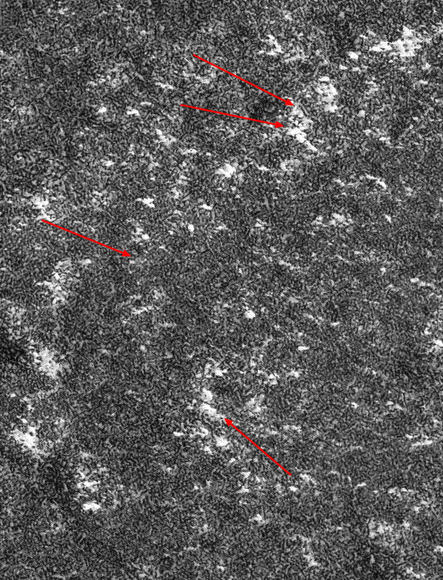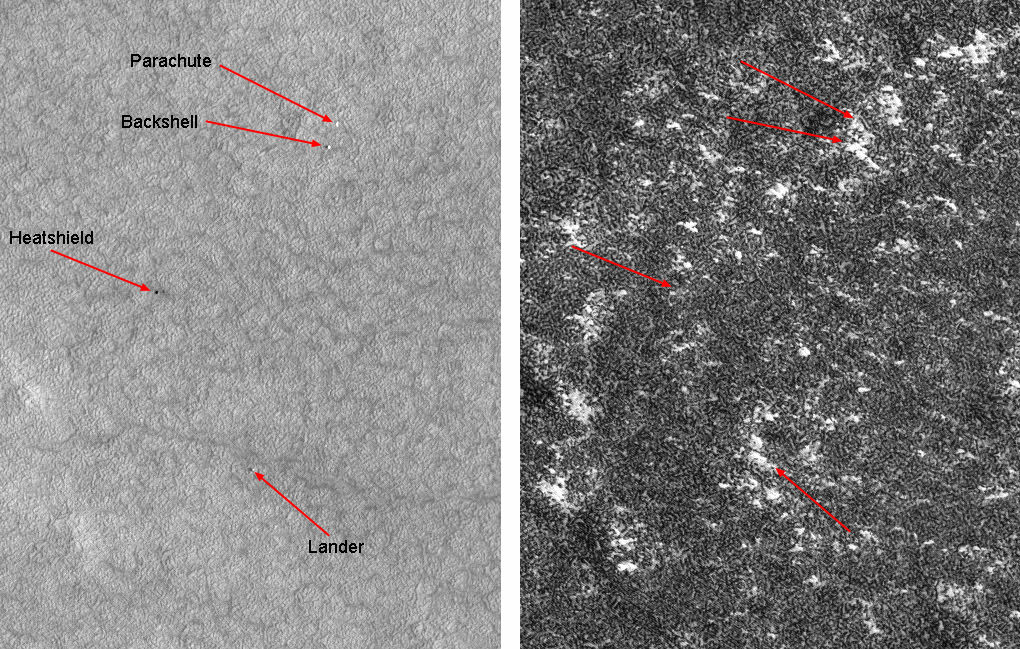[/caption]
I was just thinking of the Phoenix lander earlier this week, wondering if our little buddy was surviving the Martian winter when, boom: via Twitter came this:
@MarsPhoenix “Spring has sprung in the north hemi(sphere) of Mars! Team is waiting for longer daylight hours, around mid-Jan., to ‘listen’ for our lander.”
Then, via another Tweet from @doug_ellison, (Doug Ellision) I found out the folks at Unmannedspaceflight.com have been thinking about the Phoenix lander, too. Phil Stooke from the UMSF crew had searched for Phoenix in the latest images released by the HiRISE camera on board the Mars Reconnaissance Orbiter, taken in August 2009 and found of glimmer of hope the lander was still visible among the CO2 frost and “snow.” See the comparison above of the landing site from Dec. 2008 to August 2009. Then Emily Lakadawalla of the Planetary Society Blog took things one step further and made a little “movie” of HiRISE images of Phoenix during the different seasons on Mars (check out her extensive post here.) Hope springs eternal for many of us as to whether we’ll ever hear from Phoenix again, and time will only tell. But its nice to know there were lots of us with Phoenix on the brain this week; kind of a shared experience! (except everyone else did all the work….) See below for more closeups of Phoenix’s winter surroundings from UMSF.

Phil wrote on UMSF that it took him several tries to match up the landing site from the two different HiRISE images. “When the two sides of this comparison are blinked a thousand features match up, not just a dozen. This is a lesson to people searching for Mars Polar lander – it’s easy to be fooled! … The parachute and backshell are invisible, the heatshield almost so, but the lander’s clear.”
And below is one of just the lander from July 2009. Unfortunately, HiRISE has been unable to take any recent images of Phoenix or any other location on Mars because of MRO being in an extended safe mode. It went into safe mode over 9 weeks ago, and mission engineers have yet to determine the cause. They are playing it safe and want to get to the root cause, since this has happened four times over the course of the mission. Latest word reported in the Arizona Star is that if the system reboots itself enough times, the memory of the main computer could be reset, and basically wiped. That would be bad. “Engineers are now working to create a safeguard against that worst-case scenario as well as finding the cause of the mysterious voltage signals,” the Star said.

See all the Mars Phoenix lander images from HiRISE here.
Thanks again Phil at UMSF and Emily at the Planetary Society


I’d love to be able to see what condition the thing was in after the thaw. I think it would be a wee bit optimistic to hope for it to phone home after the deep freeze, but I guess you never know…
Was there ever any info out on what the most likely components to break first in the cold were?
IIRC it’s not the active components as such, or at least it shouldn’t be – it was claimed that it is the card material for the electronics that goes brittle (“glassifies”) at low temperatures. [I guess they used standard electronic cards, there is, or used to be, ceramics for this as well.]
Add in differential thermal shrinkage, I guess, and the stresses may snap the cards. At a guess that could happen anywhere, so there likely isn’t any specific prediction of which systems goes first.
Here’s for that Phoenix lives up to it’s name yet again and arises from “martial” ashes as well as it did from the ashes of budget hell. [raises coffee cup]
… and of course it would be nice to hear the actual facts from those in the know, instead of echoing my ill remembered readings.
I think I remember reading about the solar panels breaking under the CO2 ice weight.
But I’d sure love to hear from it again! I loved that mission.
I was under the impression the craft was destroyed by being entombed in water and CO_2 ice. I thought the craft would be reduced to pieces. It would indeed be fortuitous if it did start sending signals again.
LC
One can only dream.
There is no hope, that there is any functional
power source left, or any working electronics
component.
Unless NASA has used specialy materials?
Rest asure no power cell is funtional!